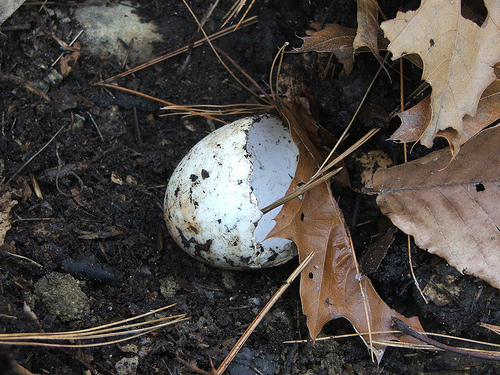This is the third article in a series on how calcium and other nutrients end up inside our vegetables, and on how to interpret certain soil test results. It is preceded by part 1 and part 2.
~
3. Water and pH
Let’s investigate the water in the soil. For one, water brings the minerals to the colloid, and it can take them away again (but so do the soil critters). Also, for reasons that will become clear later, calcium is available to plants only in dissolved form, that is, as part of a solution in water. Thirdly, this watery context heavily impacts the lives of soil critters. The most important factor in all these matters is the water’s pH or acidity or alkalinity.
As we saw, a molecule of water is composed of one oxygen atom and two hydrogen atoms: H2O. In a vat of pure water, most water molecules remain intact, but a very small amount of them react with each other in the following manner:
H2O + H2O ===> H3O+ + OH–
Water + Water ===> hydronium ion+ (an acidic cation) + hydroxyl ion– (a base)
The hydronium ion ( H3O+) is the chemical unit that accounts for the acidic properties of a solution, and the hydroxyl ion (OH–) is the chemical that accounts for the basic or alkaline properties of a solution. How?
Well, in pure water, the amounts of H3O+ and of OH– are equal, so the acid and the base cancel each other out, so pure water is said to be neutral, with a pH close to 7.0. Also, in pure water the concentration of H3O+ and OH– are in balance, so that an increase in the concentration of H3O+ causes a proportional decrease in the concentration of OH–.
This means that, if you add an acid like hydrochloric acid (HCl) to water, it reacts with some of the water molecules like this:
HCl + H2O ====> H3O+ + Cl–
And this increases the H3O+ or the acid concentration, throwing off the balance and lowering the solution’s pH to below 7, making it acidic. But if you add a strong base, such as calcium, to the water, it ionizes as follows:
Ca + H2O ====> Ca(OH-)2 + H2
Thus, the addition of calcium to water increases the OH- or alkali concentration of the resulting solutions, making the solution alkaline.
The cations (positively charged ions) we’re interested are either bases or acids:
- Basic cations: calcium (Ca++), potassium (K+), magnesium (Mg ++) sodium (Na +)
Acidic cations: aluminum (Al+++) and hydrogen (H+)
The pH of the water that saturates the soil (see 4) regulates the solubility of minerals in that soil (see 4), thus their availability to plant roots (see 5), as well as the activity of soil bacteria (see 6).
~
Mm, on to Part 4: that pesky problem of solubility, which took me a while to understand. For now let me add that I forgot all the chemistry I learned in secondary school (way back), and that this excursion has proved to be a fantastic rediscovery of all that magic.

Now you’ve got me sitting on the edge of my seat, *LOL. Looking forward to the rest of the series.